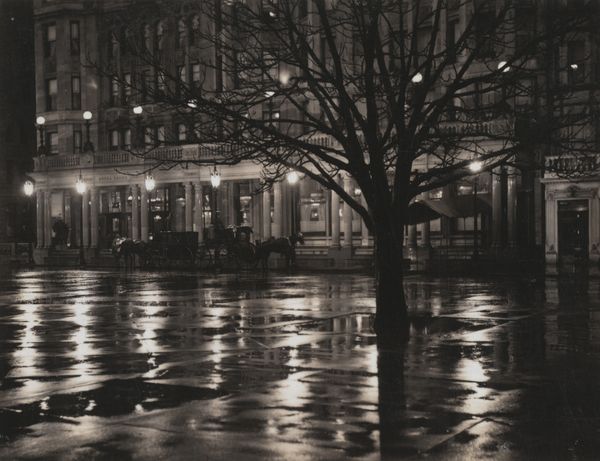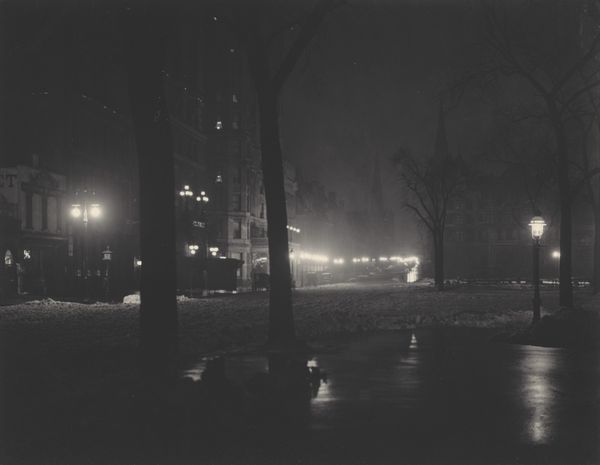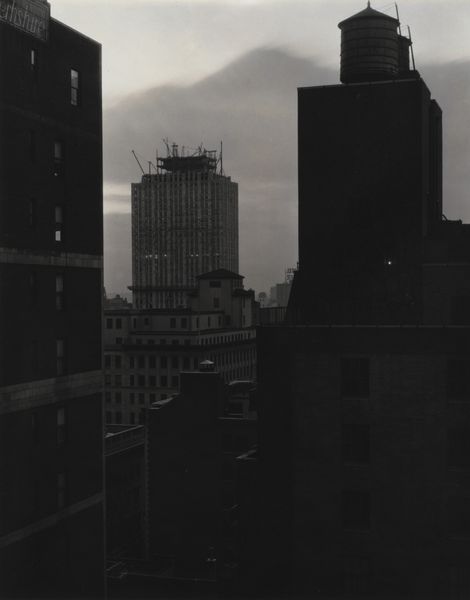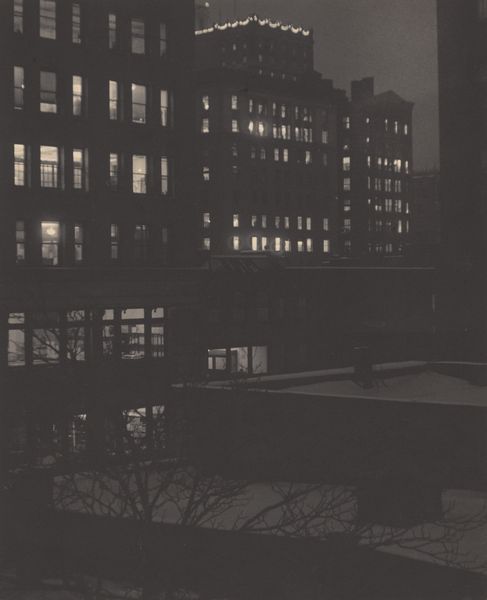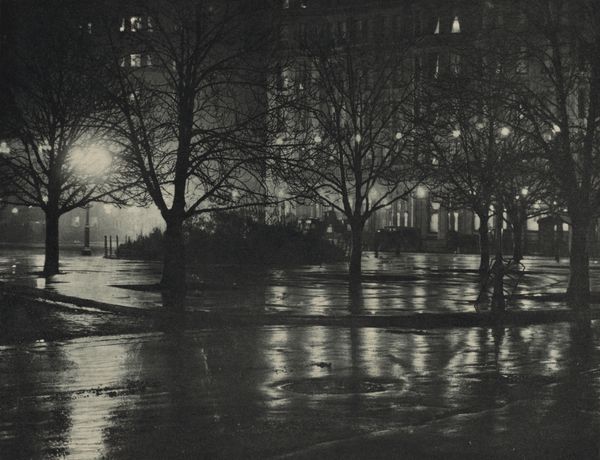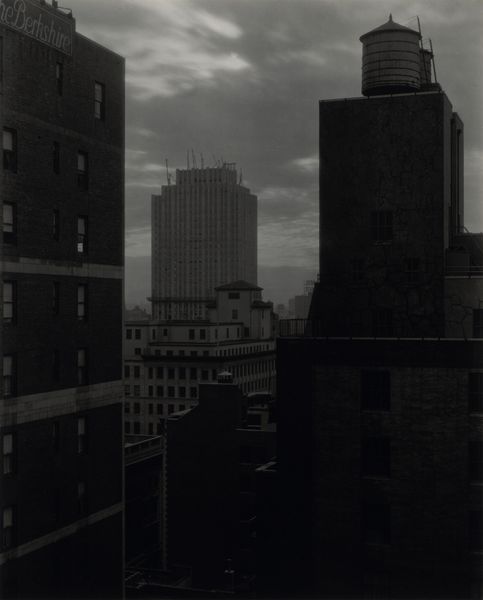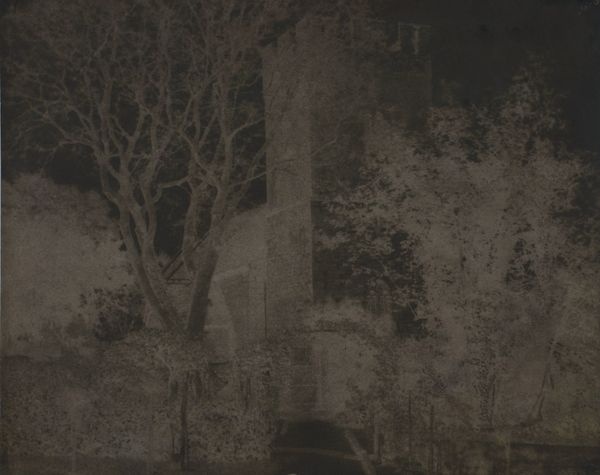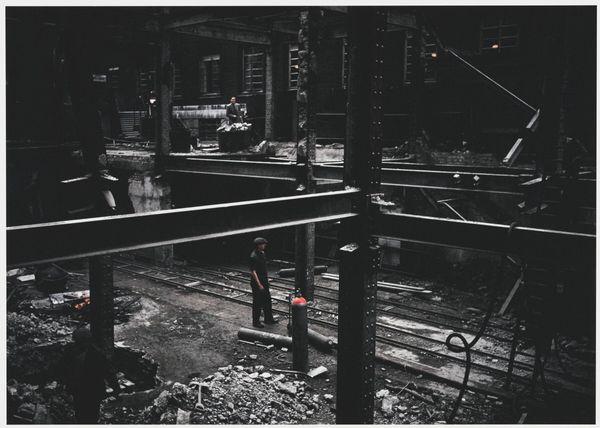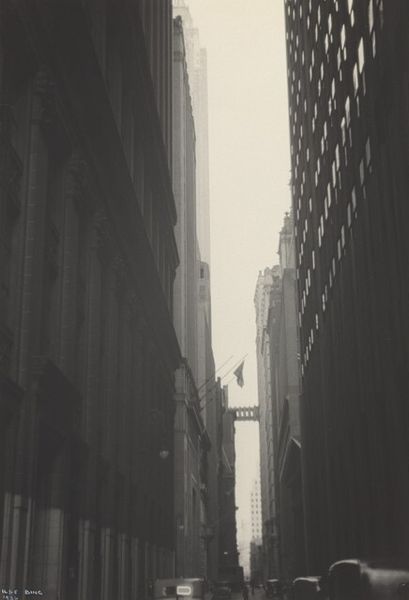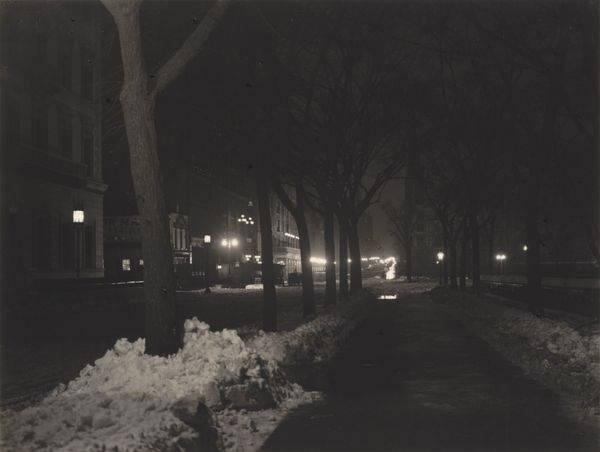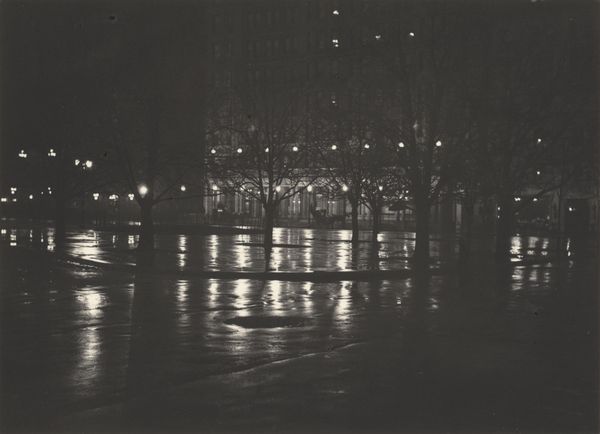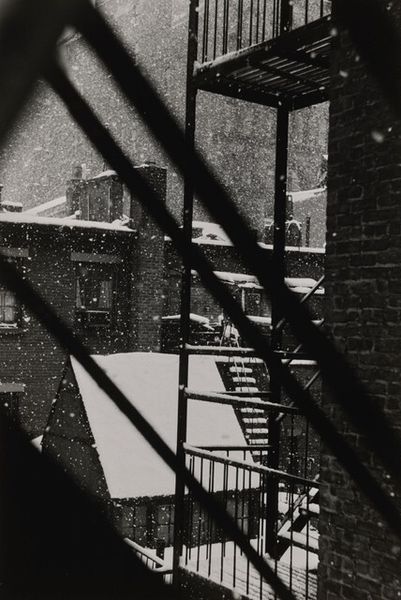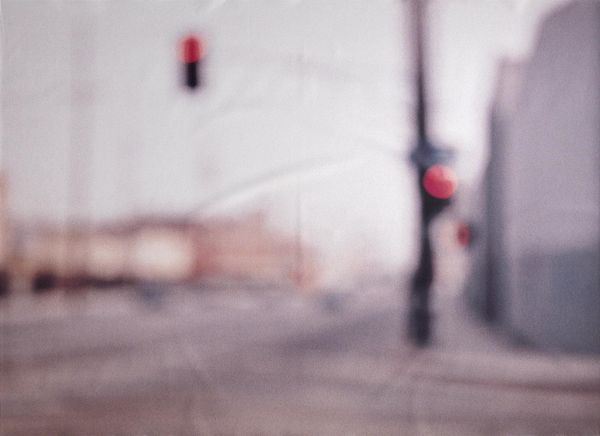
photography, gelatin-silver-print
#
black and white photography
#
pictorialism
#
black and white format
#
photography
#
black and white
#
gelatin-silver-print
#
monochrome photography
#
cityscape
#
monochrome
#
modernism
#
monochrome
Dimensions: image: 8.8 × 11.7 cm (3 7/16 × 4 5/8 in.) sheet: 10.1 × 15.2 cm (4 × 6 in.) mount: 31.5 × 24.8 cm (12 3/8 × 9 3/4 in.)
Copyright: National Gallery of Art: CC0 1.0
Curator: Alfred Stieglitz's "Night—The Savoy," likely captured sometime between 1897 and 1932, presents us with a captivating nocturnal scene, rendered in gelatin silver print. Editor: It's haunting. The skeletal tree in the foreground, set against the blurred lights of the Savoy, gives it an air of mystery, perhaps even melancholy. Curator: Indeed. Stieglitz masterfully manipulates the tonal range. The high contrast emphasizes the geometric interplay of light and shadow on the wet pavement, drawing the eye deeper into the pictorial space. Note how the diffuse lighting contributes to a flattening effect, characteristic of pictorialism. Editor: Pictorialism sought to elevate photography to the level of fine art. But to what extent did its images of glamour actually depict lived realities? Steiglitz frequently romanticized New York City while obscuring its less palatable aspects: social divisions and income disparity, for example, intensified throughout this period of modernity. Curator: I concede that the composition could be read through that lens, perhaps the obscured or invisible figures on the street as a deliberate omission to the grand scheme. Nevertheless, his experimentation with focus and printing techniques sought to instill an atmospheric quality rarely seen at that time. Think of the emphasis on texture – a deliberate subversion of photography's perceived objectivity. Editor: While Stieglitz pushed technical boundaries within his art, he seemed to exist in an echo chamber in terms of society. Looking at this image in the 21st Century, I find myself drawn to what isn't revealed in the romantic gloss: stories of those whose realities don't glimmer. How did modernity transform labor, gender, and identity? The art itself may not hold the answers, but the silence around the social aspects during this period is definitely interesting to note. Curator: Your reading definitely offers a different perspective. But my take is that, the image resonates on the level of its visual strategies—that beautiful balance of dark tones, with points of shimmering light that transform the mundane into something evocative and sublime. Editor: And perhaps that’s the lingering power of a work like “Night—The Savoy," it speaks on multiple levels, opening pathways for dialogues about seeing—and being.
Comments
No comments
Be the first to comment and join the conversation on the ultimate creative platform.
